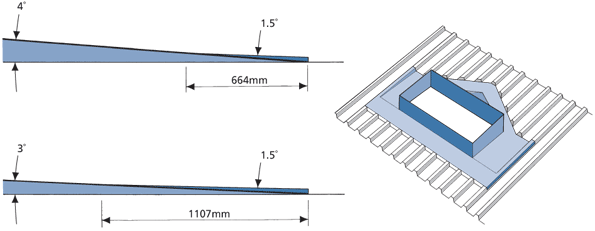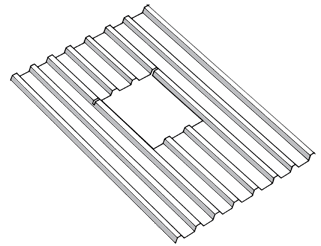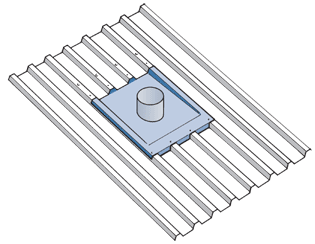Type C Tapered
Tapered flashings are also known as transition flashings because they provide a method of changing from one level to another.
A tapered flashing can be made by tapering the flashing from the pan to the rib height in the depth distance of the penetration. However, as this design lowers the pitch, it is only suitable where the pitch is not reduced below 1.5°. If the roof pitch has to be increased, it is necessary to add the tangent angle to the minimum permissible pitch for the particular profile being considered.
This amount is determined by the height of the rib and horizontal distance through which it is raised. It is necessary to determine the angle which can be calculated using the formula tan î¦ = h/d.
The calculation is derived from the tangent of the difference in the roof pitch and 1.5°. Tangents are in section 14.
Example: Taper Calculation
With a rib height of 29 mm and a taper length of 664 mm, the flashing pitch is decreased by 2.5°; it means that at minimum fall of 1.5 °, the minimum roof pitch would have to be 4°. When the minimum roof pitch is 3°, the taper length would have to be increased to 1107 mm for this rib height.
| tan 2.5° | 0.0437 | 29÷0.0437 | =663.6 |
| tan 1.5° | 0.262 | 29÷0.0262 | =1106.8 |
A tapered design can be used as a retrofit for any profile by slitting the ribs to half their height and sliding the tapered flashing into position. When it is used in a new installation, extra sheets can be provided to weather the lap without slitting the sheets or the use of sealant.
- Log in to post comments



